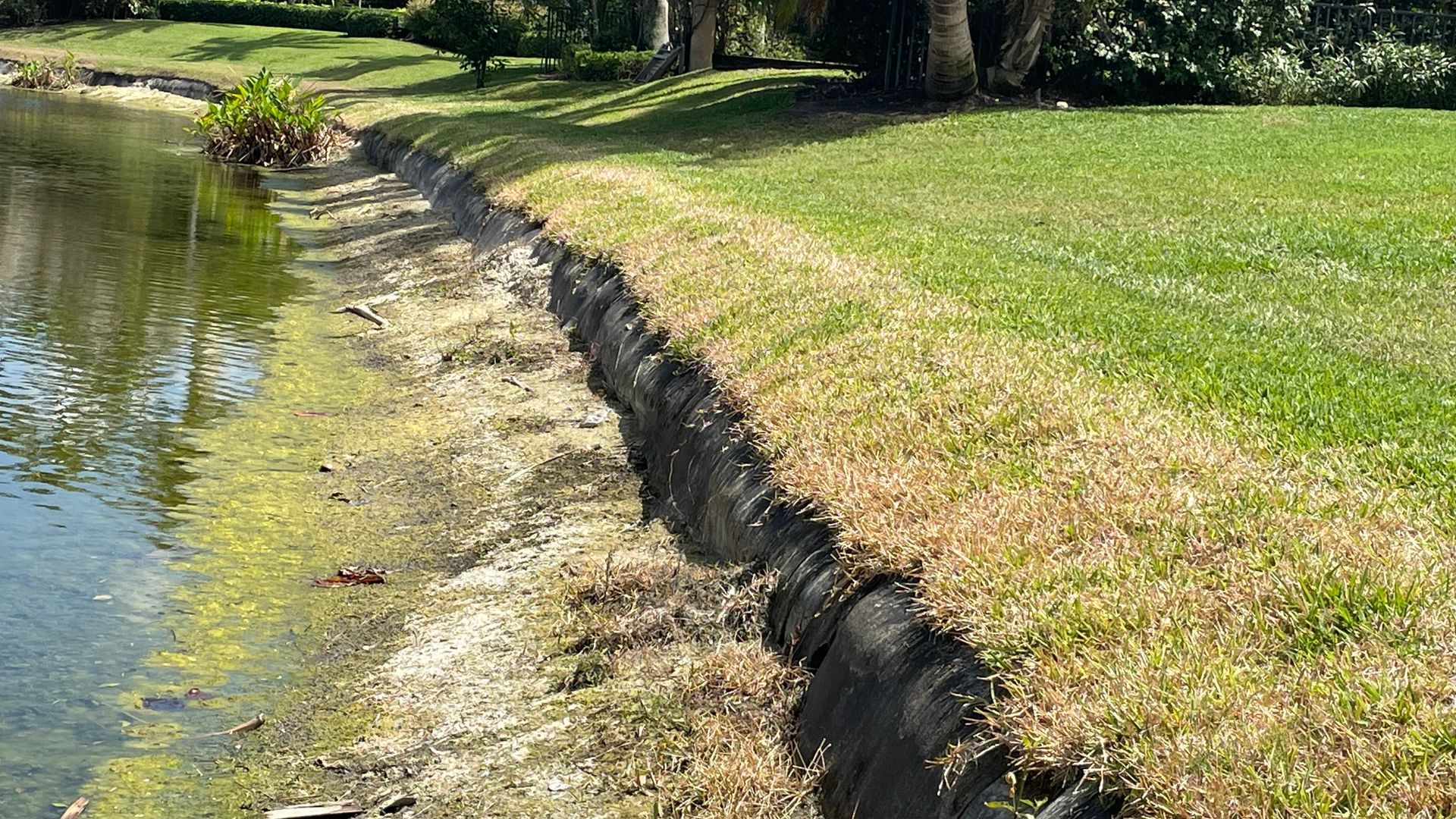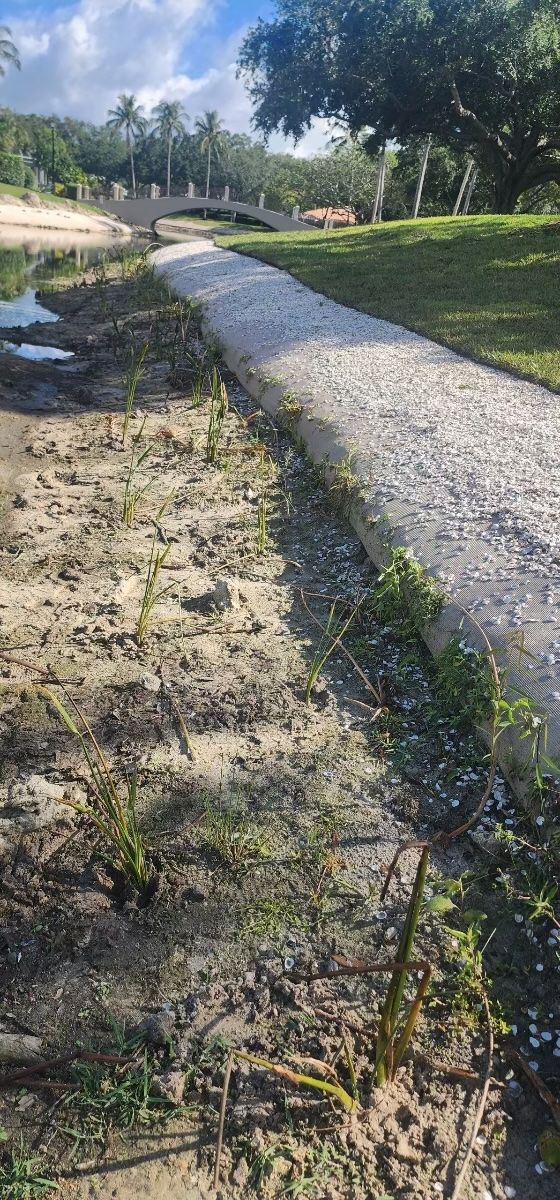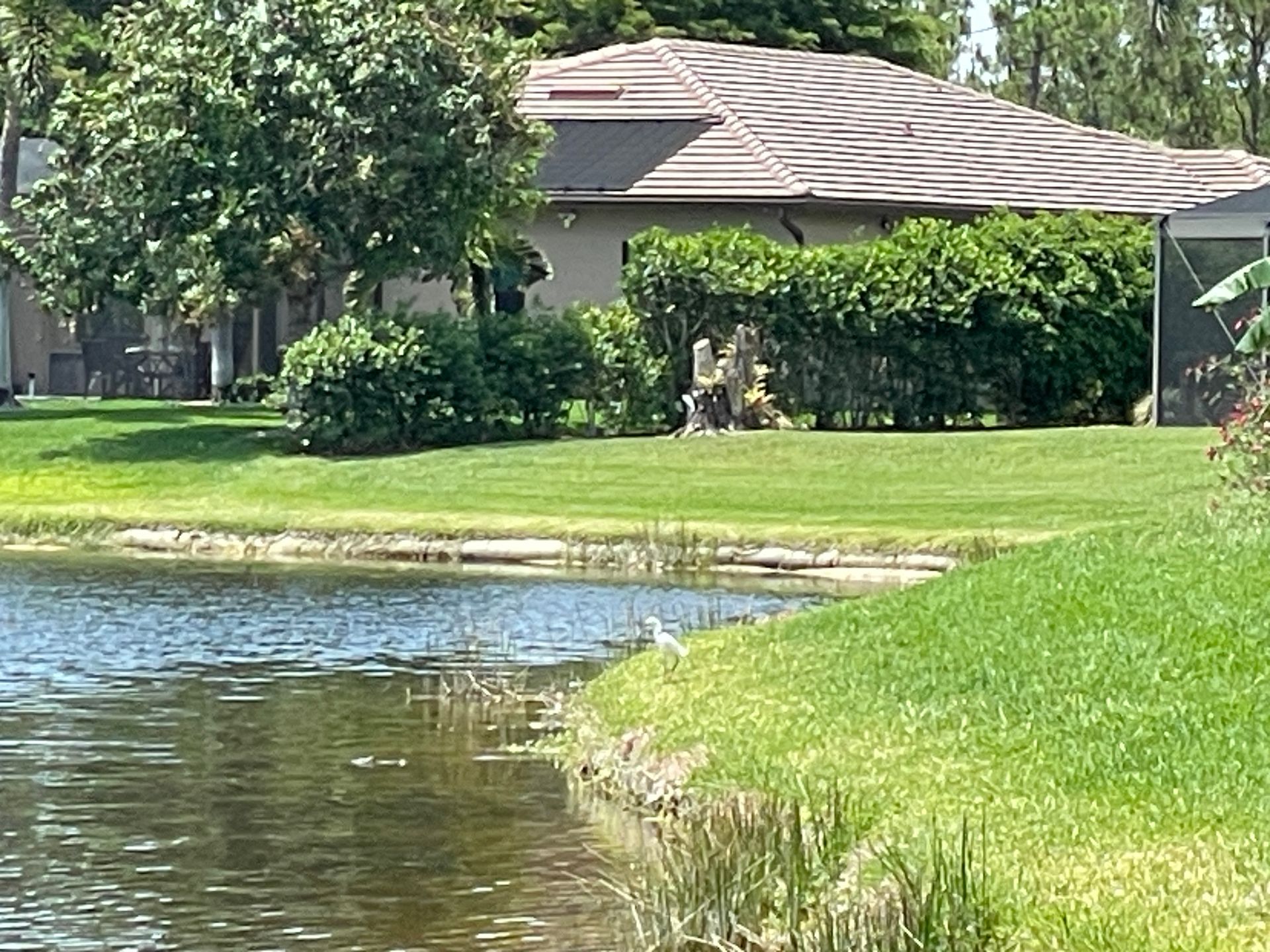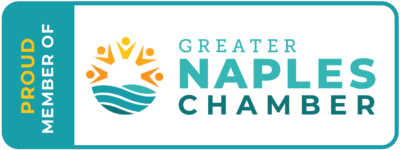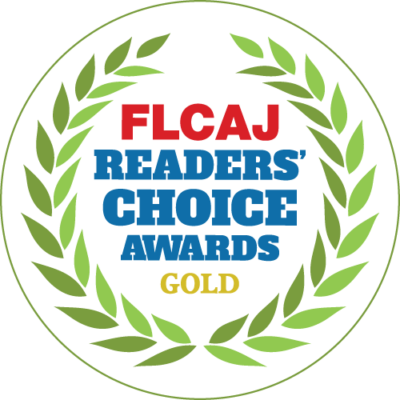Geotube Fails: Our experience with other contractors’ geotube installations and why they failed
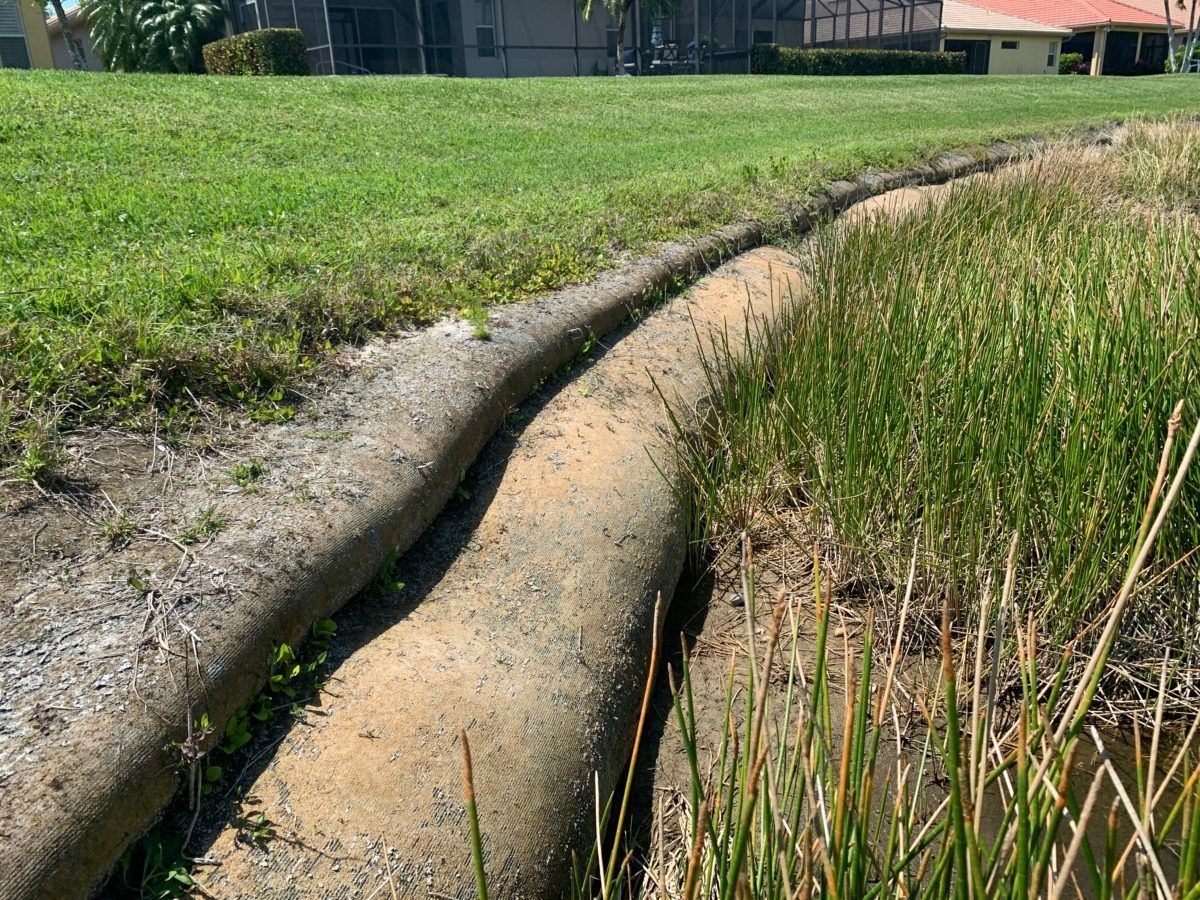
Geotubes are a ubiquitous remedy for shoreline erosion on bodies of fresh water in South Florida. A geotube is a long bag or sock that is filled with lake bottom sediment, imported fill, pine straw, or other materials. The efficacy of Geotubes is based on the presumption that 1)soil and sod will sit on top of a synthetic material and grow long term and 2)sod will survive underwater. Both of these presumptions are false. Once installed, the Geotubes themselves are invisible because they are covered with fresh, new sod that extends all the way down to just below the high-water level on lakes, ponds, rivers, and streams. This is attractive to communities that see the finished product and receive a quote on the product and installation which is typically less than all other forms of shoreline stabilization. But the old adage applies here… “you get what you pay for”. Most shorelines that are stabilized with Geotubes need to be redone or rebuilt every 5-7 years due to the aforementioned presumptions.
Some communities are told that Geotubes are beneficial because they utilize soil that has eroded into the bottom of the lake or pond and the soil is sucked up and used to fill the tubes. This is false. Most lakes in South Florida have not encountered enough erosion to necessitate this. There would have to be so much erosion along the shoreline that the depth of the lake becomes materially changed, thus changing the lake’s temperature and amount of sunlight penetration, in order for dredging to be necessary. Or, in some cases, natural erosion or storm damage can cause a long, thin lake to separate into two lakes. In the case where one lake becomes two, it is necessary to remove the sediment to restore the lake back to its natural state.
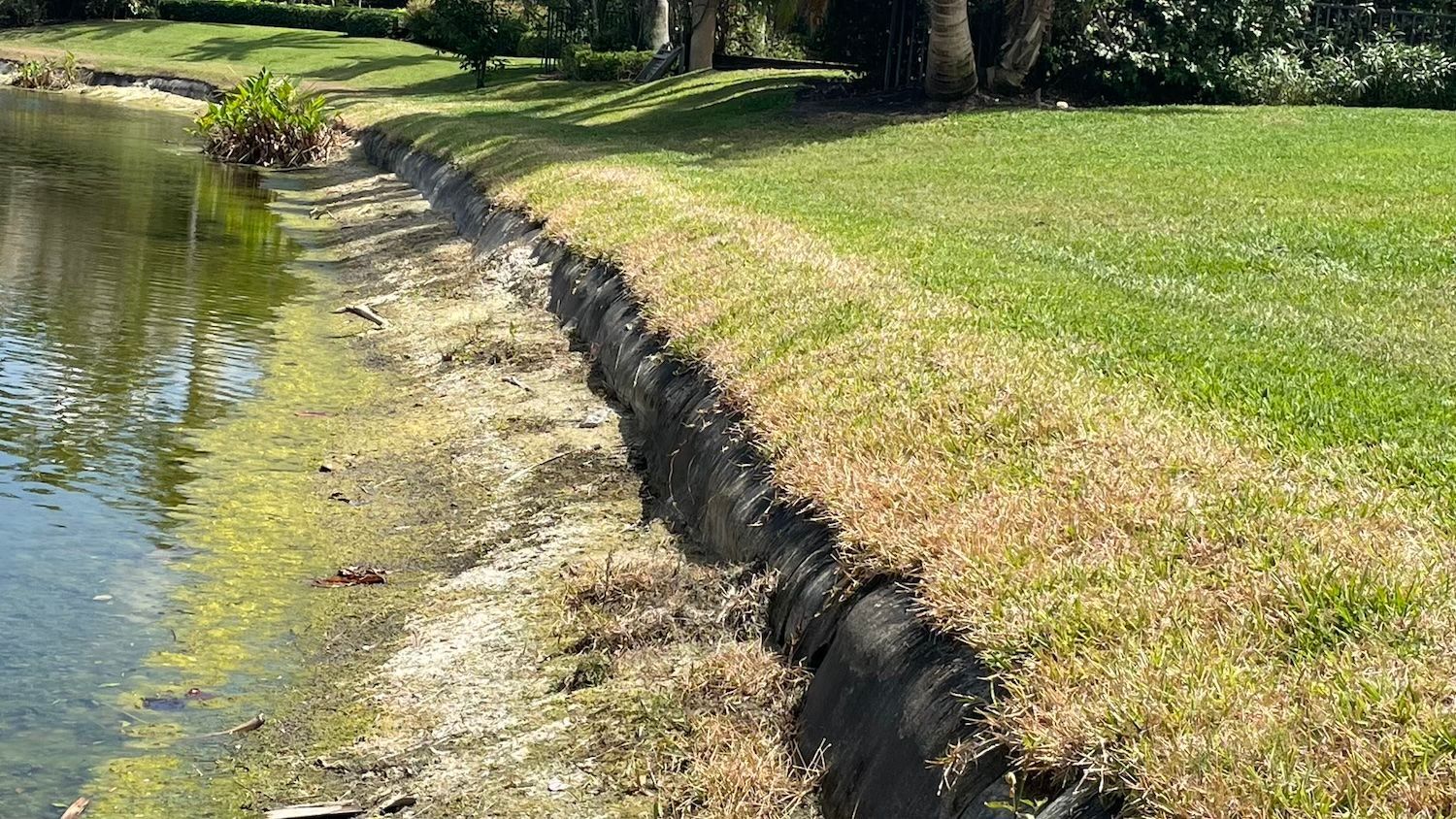
Geotubes can be used alone or stacked, depending on how much vertical drop there is at the top of the shoreline (called the escarpment). Some companies use a product called a poly-woven containment system which is one large geotube that acts like several smaller ones. In both cases, the inherent problems with Geotubes present themselves and short-term failure is inevitable.
I have encountered a residence on a lake in Port Charlotte, FL in which the homeowner previously hired a contractor to install a geotube to stabilize his eroding shoreline and the geotube was filled with pine straw! The homeowner paid a small fortune to have this done and the tube failed within just a year or two as the pine straw biodegraded within the tube. This solution was doomed for failure before it was even installed! Our firm came in and installed rip rap over top of the old tube and his erosion has been mitigated to his satisfaction.

A community in Estero, FL hired a firm from the east coast of Florida to dredge their lakes and move the material up onto the shoreline where erosion was occurring. The firm sucked up the sediment at the bottom of the lake and pumped it into several geotubes sitting on the shoreline. The filled tubed were allowed to bake in the sun until they dried- a typical practice in South Florida. They were then sliced open to expose the sediment and spread it around the shoreline. Typically, you will want to grade and compact this newly-installed sediment in order to restore the shoreline but in this case the contractor simply left the piles of sediment and cut geotubes on the shoreline. Halfway through the project the contractor quit or went bankrupt and the community was left with a mess on their hands! So, always vet your contractor to make sure they are experienced, financially stable, and have enough equipment to do a proper job.
by Justen Dobbs, State-Certified Marine Contractor
Recent Posts
